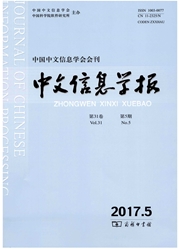

 中文摘要:
中文摘要:
该文区分了"言语行为否定"和"命题真值否定"两类否定义:前者表达对某种行为状态的否定态度(谴责、拒绝、禁止等);后者否定某个命题:或者否定命题的"真值条件"、或者否定命题的"适宜条件"、或者否定命题主目的"典型条件",表达"X未达某标准"。此外,进一步对两类否定义的基本要素及要素间的关系进行分析,讨论了表达每一类语义的"X什么"类构式的变项选择限制与实际使用情况,并总结了"X什么"类构式间的异同。
 英文摘要:
英文摘要:
Two different negations are distinguished in this paper--illocutionary negation and propositional negation. Speaker uses illocutionary negation to express his negative attitude, such as blame and dissuasion, towards somehody's certain behaviors. Propositional negation either directly negates the truth of a proposition, or negates the suitable conditions of a proposition, or expresses the meaning that X doesn't reach certain standards. Further- more, the basic elements of each negation and the relations between these elements are analyzed, and the constraints of the variable X of each constructions of each kind of negations are discussed. The differences and similarities of these constructions are listed in the end.
 同期刊论文项目
同期刊论文项目
 同项目期刊论文
同项目期刊论文
 期刊信息
期刊信息
